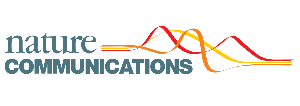
Effect of Tocilizumab on Disease Activity in Patients With Active Polymyalgia Rheumatica Receiving Glucocorticoid Therapy: A Randomized Clinical Trial
Devauchelle-Pensec V, Carvajal-Alegria G, Dernis E, et al. Effect of Tocilizumab on Disease Activity in Patients With Active Polymyalgia Rheumatica Receiving Glucocorticoid Therapy: A Randomized Clinical Trial. JAMA. 2022;328(11):1053–1062. doi:10.1001/jama.2022.15459
A new publication from LBAI, out in the JAMA, shows that blocking IL-6 using tocilizumab has a strong steroid-sparing effect in Polymyalgia Rheumatica. Check out a video presentation from the JAMA :

A new molecular classification to drive precision treatment strategies in primary Sjögren's syndrome 1
1-Soret P, Le Dantec C, Desvaux E, Foulquier N, Chassagnol B, Hubert S, Jamin C, Barturen G, Desachy G, Devauchelle-Pensec V, Boudjeniba C, Cornec D, Saraux A, Jousse-Joulin S, Barbarroja N, Rodríguez-Pintó I, De Langhe E, Beretta L, Chizzolini C, Kovács L, Witte T, PRECISESADS Clinical Consortium, PRECISESADS Flow Cytometry Consortium, Bettacchioli E, Buttgereit A, Makowska Z, Lesche R, Borghi MO, Martin J, Courtade-Gaiani S, Xuereb L, Guedj M, Moingeon P, Alarcón-Riquelme ME, Laigle L, Pers JO. A new molecular classification to drive precision treatment strategies in primary Sjögren's syndrome. Nature Comm. 2021, https://doi.org/10.1038/s41467-021-23472-7.
The difficulty in developing effective therapies in primary Sjögren’s syndrome (pSS), a rare autoimmune disease manifested by destruction of the exocrine glands, especially those that cause saliva and tears (sicca syndrome), is -in part- because of the heterogeneity in the clinical manifestation and pathophysiology of the disease. Finding common molecular signatures among patient subgroups could improve our understanding of disease etiology, and facilitate the development of targeted therapeutics.
Using high-throughput multi-omics data (genetic, epigenomic, transcriptomic, combined with flow cytometric data, multiplexed cytokines, as well as classical serology and clinical data) from the PRECISESADS IMI JU project, the team of Brest (LBAI, UMR1227, France), led by Pr Jacques-Olivier Pers, in collaboration with Servier, reports on the integrated molecular profiling of 304 primary Sjögren’s syndrome (pSS) patients compared to 330 matched healthy volunteers in a manuscript published in Nature Communications. Four groups of patients with distinct patterns of immune dysregulation were identified.
Algorithms derived from machine learning discriminate the 4 clusters based on distinct biomarkers that can be easily used in a composite model to stratify patients in clinical. This will also make it possible to re-analyze, on the basis of this new molecular classification of pSS patients, the previous clinical trials which, to date, have all been negative.
In conclusion, the study provides a clear understanding of pSS heterogeneity providing clinically and immunopathologically relevant signatures to guide precision medicine strategies.





